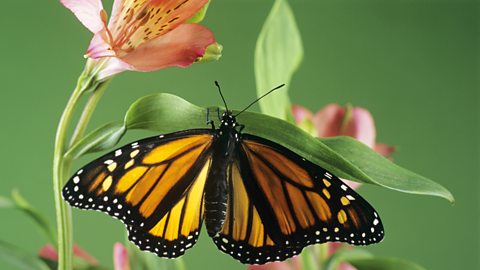Learned behaviour
Learning is the modification of responses as a result of experience. Learned behaviours can vary greatly between individuals.
Examples of learned behaviours
Associative learning
The monarch butterfly has a bright orange colour and an unpleasant taste to birds. As a result of feeding experiences, birds avoid eating orange butterflies as they have learned to associate their colour with the unpleasant taste.

Habituation
A snail will withdraw its body when its shell is tapped. This withdrawal response is an innate behaviour that helps it to avoid predation.
If the snail’s shell is tapped repeatedly, but the snail is not attacked by a predator, then the snail stops making the withdrawal response. This is called habituationA short term learned behaviour where the organism learns not to respond to a harmless stimulus.. Habituation allows animals to avoid wasting energy by responding to repetitive harmless stimuli.
Many behaviours have innate and learned components.